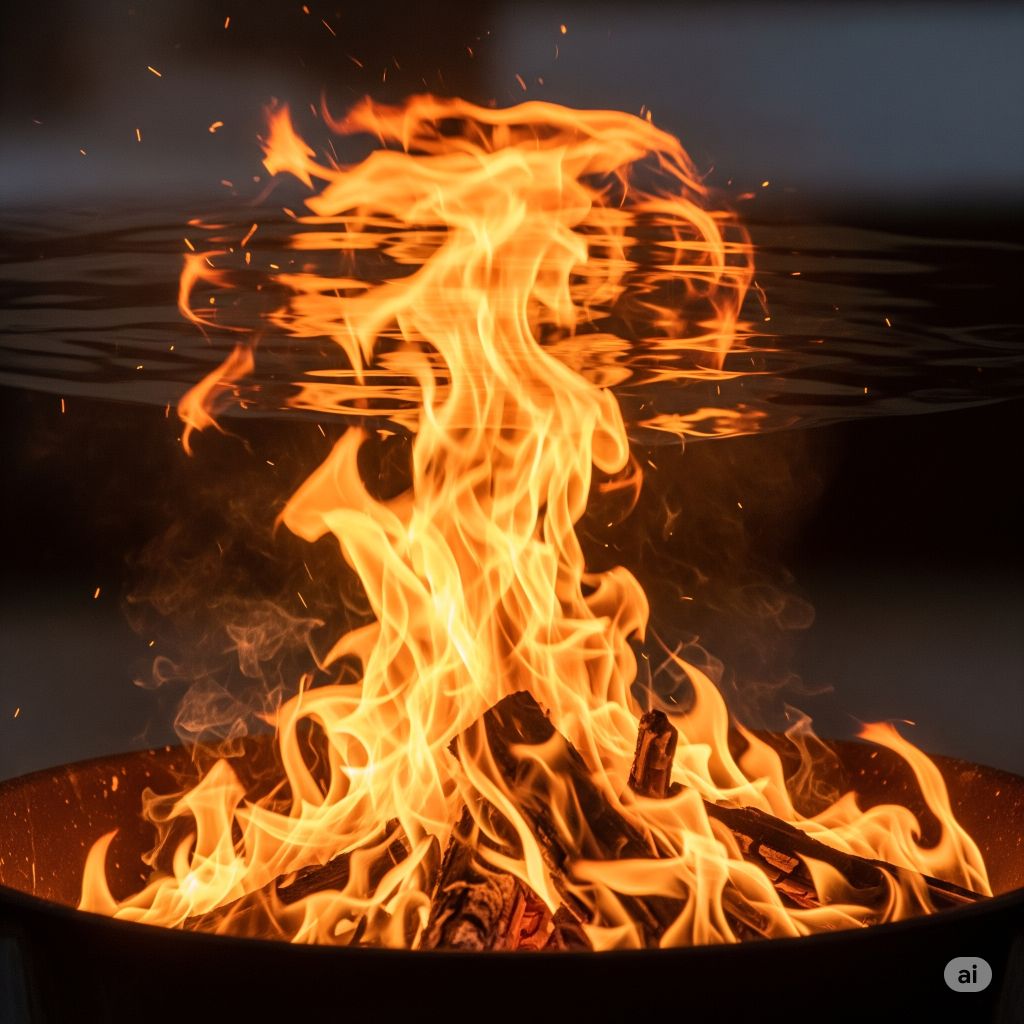
Have you ever wondered if fire has weight? Or if it has mass? As a science enthusiast, I’ve delved into the fascinating world of fire to uncover the truth behind these burning questions. Join me as we explore the weight and mass of fire in this eye-opening article.
Fire is a mesmerizing phenomenon that has captivated humans for centuries. But amidst its beauty and power, the concept of its weight and mass remains a mystery to many. In this article, I’ll break down the science behind fire and reveal whether it possesses weight and mass. Let’s dive into the flames and uncover the truth together.
Key Takeaways
- Fire does have mass due to the combustion products like smoke, ash, and gas generated during the burning process.
- Understanding the weight of fire helps in grasping fire behavior, heat distribution, and safety measures.
- Factors affecting the weight of fire include fuel type, combustion efficiency, heat output, environmental conditions, and duration of the fire.
- Fire itself does not have mass as it is a reaction, but its weight can be inferred by measuring the materials consumed during combustion.
- Debunking myths: Fire is not weightless; it requires fuel for combustion and cannot exist in a vacuum due to the need for oxygen.
Exploring the Concept of Fire Weight
When delving into the concept of fire weight, it’s essential to understand the intricate nature of this elemental force. Fire is a chemical reaction that involves the rapid combination of oxygen with a fuel source. While fire might appear to be weightless and ethereal, it does indeed have mass. This mass is a result of the chemical components involved in the combustion process.
In scientific terms, the mass of fire is primarily attributed to the combustion products generated during the burning process. These products, such as smoke, ash, and gas, contribute to the overall mass of the fire. Therefore, when examining fire weight, it’s crucial to consider not just the visible flames but also the byproducts of combustion.
Understanding the weight of fire can provide insights into various fire-related phenomena and aid in fire safety measures. By grasping the mass of fire, scientists and researchers can better comprehend the behavior of fires, the distribution of heat, and the potential hazards associated with different types of combustion.
Moreover, recognizing that fire possesses mass reinforces the importance of handling fires with caution and implementing effective fire containment strategies. By acknowledging the massiveness of fire, individuals can appreciate the gravity of this powerful element and the significance of fire prevention and control measures.
Understanding the Relationship Between Fire and Mass
When delving into the concept of fire weight, it’s essential to understand the intrinsic link between fire and mass. Fire, despite its intangible nature, does have mass due to the byproducts it produces during combustion. These byproducts such as smoke, ash, and gas contribute to the overall weight of a fire.
Recognizing the relationship between fire and mass is crucial for comprehending fire behavior, heat distribution, and safety measures. The mass of fire plays a significant role in how it spreads and interacts with its environment. It’s this mass that dictates the intensity of a fire and influences the strategies required to combat it effectively.
By acknowledging that fire has mass, we can appreciate the importance of handling fires with caution and implementing robust containment measures. Understanding the weight of fire is not just theoretical knowledge; it directly impacts how we approach fire safety and prevention.
Factors Affecting the Weight of Fire
When considering the weight of fire, several factors come into play.
- Fuel Type: Different fuels have varying densities and compositions, which ultimately impact the weight of the fire produced.
- Combustion Efficiency: The efficiency of the burning process influences the amount of byproducts produced, such as smoke, ash, and gas, which contribute to the overall mass of the fire.
- Heat Output: The intensity of the fire’s heat output can determine the rate at which fuel is consumed and byproducts are generated, affecting the weight of the fire.
- Environmental Conditions: Factors like temperature, humidity, and wind speed can influence the behavior of fire, thereby affecting its weight and mass.
- Duration of the Fire: The longer a fire burns, the more fuel it consumes, leading to the production of additional byproducts that contribute to the overall weight of the fire.
Understanding these factors is essential for grasping the concept of fire weight and its implications in various scenarios.
Can Fire Be Measured in Terms of Mass?
When it comes to measuring fire in terms of mass, things get a bit tricky. Fire itself does not have mass because it is a reaction rather than a physical object. However, the materials being burned certainly do have mass. This means that the weight of the fire is essentially the same as the weight of the materials consumed during combustion.
To measure the mass of fire indirectly, we can weigh the materials before and after combustion. The weight lost during the burning process is essentially the weight of the fire. This method is commonly used by researchers and firefighters to determine the fuel consumption rate of fires.
It’s important to note that other factors can affect the weight of fire, such as temperature and environmental conditions. These variables can influence combustion efficiency and the heat output of the fire, ultimately impacting the overall weight of the fire.
While fire itself may not have mass, its weight can be inferred by understanding the mass of the materials being burned and considering various factors that influence the combustion process.
Debunking Myths and Revealing the Truth
When it comes to the question of whether fire has mass, there are common misconceptions that need to be addressed. Fire itself does not have mass, as it is a chemical reaction that releases heat and light as it consumes fuel. It’s essential to understand that mass is a physical property of matter, which fire is not.
One of the persistent myths about fire is that it is weightless. While fire may appear to be ethereal and weightless in its dance, the materials undergoing combustion contribute to the mass involved in a fire. By calculating the mass of the materials burned, one can indirectly determine the weight of the fire based on the weight lost during combustion.
Another misconception is that fire is alive. Fire is not a living organism but a reaction fueled by three elements known as the fire triangle: heat, fuel, and oxygen. Understanding this can help dispel the myth that fire possesses life-like qualities.
Moreover, some may believe that fire can exist in a vacuum. However, fire requires oxygen to sustain combustion, making it impossible in a vacuum where there is a lack of oxygen. This fact highlights the importance of the role of oxygen in supporting and sustaining a fire.
By debunking these myths and shedding light on the truth behind the nature of fire, we can gain a clearer understanding of this powerful and essential phenomenon.
Conclusion
Fire, despite popular belief, does not possess mass in itself. The weight of fire is attributed to the materials burned in the process of combustion. By grasping the scientific principles behind fire as a chemical reaction dependent on heat, fuel, and oxygen, misconceptions about its nature are dispelled. It’s crucial to recognize that fire cannot sustain itself in a vacuum, highlighting the role of oxygen in the combustion process. Understanding these fundamental truths sheds light on fire’s essence as a formidable force of nature
🔥 Does Fire Have Mass or Weight? –FAQs
1. Does fire have mass?
Fire itself doesn’t have mass. It is not a substance but a process—a visible reaction (combustion) involving light, heat, and gases. The flames you see are hot gases glowing, and those gases do have mass.
2. Does fire have weight?
The flame (fire) doesn’t have weight on its own. However, the gases involved in the combustion, such as carbon dioxide and water vapor, do have weight. So, while “fire” isn’t a thing with weight, the materials it produces do.
3. What is fire made of?
Fire is made of:
- Hot gases (CO₂, H₂O vapor, unburnt particles)
- Light (from excited atoms)
- Heat (infrared radiation)
These components all result from combustion but are not “mass” in the traditional sense.
4. Why can we see fire if it has no mass?
We see fire because the atoms and particles in hot gases emit light when they’re energized. This makes fire visible, even though light itself has no mass.
5. Is fire a solid, liquid, or gas?
None of the above. Fire is plasma and hot gases—a mix of ionized gas and light-emitting particles—not a solid, liquid, or typical gas.
6. Do flames weigh anything?
Not directly. The flame is the visible part of combustion, made of glowing gases. Those gases have mass, but the flame is more a visual phenomenon than a physical object you can weigh.
7. Can fire be weighed in a lab?
You can weigh the gases released during combustion, but not the flame itself. For example, by burning a material in a sealed chamber, scientists can measure the mass before and after to calculate changes.
8. Does burning something make its mass disappear?
No. According to the law of conservation of mass, mass isn’t destroyed—it’s transformed. When something burns, its mass becomes gases and ash—the total mass remains the same, just in a different form.
9. Is fire energy or matter?
Fire is mostly energy (heat and light) with some matter (hot gases, smoke). The flame itself is not a physical object; it’s a reaction zone where energy is released.
10. If fire has no mass, why is it affected by wind or gravity?
The gases in fire are affected by wind and gravity. Hot air rises (convection), which gives fire its upward shape. Wind affects how gases move, which influences the direction of the flame.
